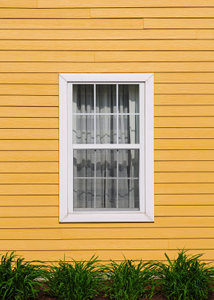Hire a Contractor to Install or Replace Siding
Find Reliable Contractors Today.
Quick, Free Service, No Obligation!
Wood Siding
Wood siding, often known as clapboard, provides protection to homes from environmental conditions while also adding aesthetic quality to the structures it covers. Wood has been used as siding for hundreds of years and is often associated with classic architectural styles such as Queen Ann and Carpenter Gothic.
Types of Wood Siding
Redwood, cedar, and pine are the preferred softwoods used for siding because they are readily available. Hard woods such as oak, hickory, beech, and sycamore are also used but are more difficult to cut, treat, and nail into. Trees are sawed into planks, grooves are then cut into the wood, and a finish may be applied.
Modern manufacturing techniques have led to the invention of engineered wood siding, a product that is made of wood chips that are heated with pressurized steam and shaped into planks. Resins bind the fibers and provide added strength to the material.

How Wood Siding is Produced
Wood siding is available in a number of cuts that permit the overlapping of planks in order to stop moisture from seeping through to the home. Plywood is sometimes used as an inexpensive alternative to cover homes and is available with grooves that imitate vertical siding.
Wood siding is usually cut using tongue and groove so that individual planks can be joined together to provide a seal against the elements. Wood planks may be applied vertically or horizontally, and the wood may be treated or untreated prior to installation.
Warranties on Wood Siding
Manufacturers of wood siding provide warranties on the materials against decay, some for as long as 60 years. They cover defects in the production process and decay but not the labor involved in installation, finishing, or maintenance of the product. A number of conditions are excluded from warranties.
Qualified siding contractors usually provide warranties to cover any problems arising from installation, and homeowners should check on this important detail prior to signing a contract. Installation warranties are usually for a limited time period and will likely exclude a number of damaging conditions such as flood and fire.
Common Problems with Wood Siding
The most important disadvantage of wood siding is the need for regular maintenance to protect the material from the weather. The siding must be treated every four to nine years with paint or other finishes that will prevent rain and snow from coming into contact with the wood.
Insects can also be a problem. Ants and termites can make their nests and eat through many types of wood siding. Homes situated in areas with regular infestations may benefit more from engineered wood siding products that include anti-pest ingredients to protect the material.
Environmental Impact of Wood Siding
Wood is considered a moderately renewable resource as trees can be replanted and grow relatively quickly. Solid wood is also biodegradable, although most wood stains and paints applied to the wood are not environmentally friendly and can be toxic. Some energy savings for the homeowner may occur as a result of installing wood siding to keep the home warmer in winter and cooler in summer.
Popular Brands
- Cape Cod
- Catawba
- GemThane
- SmartSide
- THOR
- TruWood (by Collins Products)
